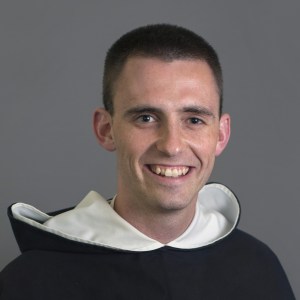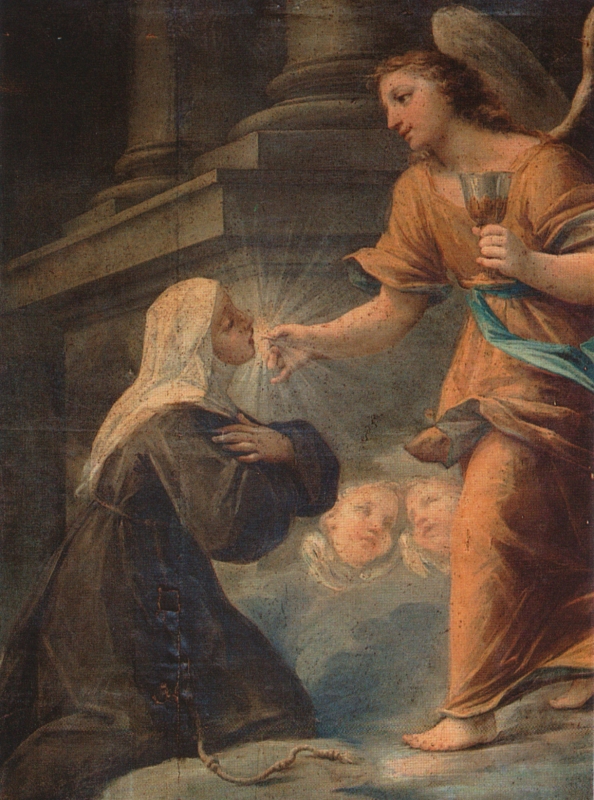
-by Br. Maximilian Maria Jaskowak, OP
“The boys in the nave raised their short, scrawny necks above the congregation, gazing ruefully in the direction of the sanctuary. Before the altar, the priest joined his hands and bowed his head, saying: Sanctus, Sanctus, Sanctus Dominus Deus Sabaoth. Pleni sunt caeli et terra gloria tua: Hosanna in excelsis. Benedictus qui venit in nomine Domini: Hosanna in excelsis. The boys’ attention, however, did not follow the sacred action of the aged Friar of Foligno, no matter how pious he seemed.
The others—both Italian villagers and pilgrims—observed the liturgical proceedings of the Friar with due attentiveness, but their concerns, too, were elsewhere. The coarse whisper of the Friar was just loud enough for the people to discern occasional phrases or syllables of the ancient prayers, and those pious few who knelt near the sanctuary strained to hear the hallowed words of the Canon, though they knew little Latin. Their devotion, perhaps true, gave way to their curious anticipation of the miraculous. For one among them was a mystic, who had received divine favors such as visions, locutions, and the stigmata. The Holy Mass had thus become an ongoing manifestation of grace in the person of their celebrated saint.
The priest approached the words of consecration: …benedixit, fregit, deditque discipulis suis, dicens: Accipite, et manducate ex hoc omnes. At this moment, the boys’ parents—and many others—peered through the candlelit cathedral toward the left of the nave with mounting anticipation. Huddled there, cloaked in worn, earthen-colored mantles, were the “tertiaries” of the village, who devoted themselves to works of charity throughout the communities of Foligno and Assisi. Soon enough, their foundress (the mystic) would fall into ecstasy; a most grandiose sight, indeed.
HOC EST ENIM CORPUS MEUM.
The people, surely aware of the miraculous, supersubstantial bread raised high for veneration, nonetheless looked to another place. In the left of the nave, they witnessed another miracle, far less magnificent than what had occurred upon the altar, but no less astonishing and exceptional, especially to the medieval imagination. For God had chosen the Italian Beata, Angela of Foligno, a most unconventional woman, to manifest His glory as a penitent woman and mystic of the late thirteenth century. The people gawked at the extraordinary display of divine intimacy, the Beata, rapt in ecstasy before the Blessed Sacrament. Like the consecrated host, Angela rose in the air—by power unseen, lost in adoration of the Ineffable before them.
It was the feast of St. Felician of Foligno, the patron of the city, but it could have been any other day, after the Beata had embarked on a life of prayer and penance.
Only declared a saint in 2013 by Pope Francis, she has, all the same, received notable attention by historians and theologians alike since her death on January 4, 1309. Called by St. John Paul II the “Teacher of Theologians,” interest in St. Angela of Foligno often focuses on her profound experience of union with God and her equally impressive writings on the divine illuminations she received during prayer. Pope Benedict XVI, in a 2010 general audience concerning her life and writings, said as much:
People are usually fascinated by the consummate experience of union with God that she reached, but perhaps they give too little consideration to her first steps, her conversion and the long journey that led from her starting point, the “great fear of hell,” to her goal, total union with the Trinity. The first part of Angela’s life was certainly not that of a fervent disciple of the Lord.
Certain events, such as the violent earthquake in 1279, a hurricane, the endless war against Perugia and its harsh consequences, affected the life of Angela who little by little became aware of her sins, until she took a decisive step. In 1285, she called upon St. Francis, who appeared to her in a vision, and asked his advice on making a good general Confession. She then went to Confession with a Friar in San Feliciano.
As we begin this new year of 2018, let us call upon our patron saints with confidence, asking help—as did St. Angela—in living the life of grace. Let us also pray, especially this day, to St. Angela of Foligno, that we, too, may take that decisive step toward our final end: eternal life with God.
The Blessed Angela di Foligno, when asked how she was able to receive and endure sufferings with so much cheerfulness, replied: ‘Believe me, the grandeur and value of sufferings are not known to us. For, if we knew the worth of our trials, they would become for us objects of plunder, and we should go about trying to snatch from one another opportunities to suffer.’”
—Cultivating Virtue: Self-Mastery With the Saints
St. Angela of Foligno, pray for us.”
Love,
Matthew


